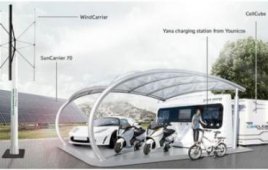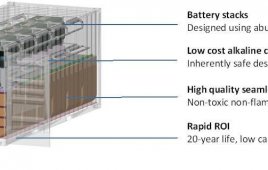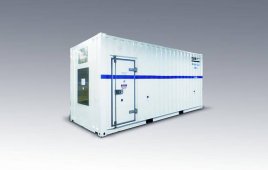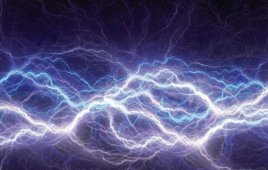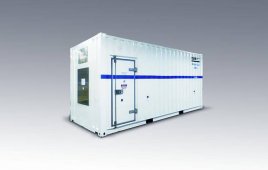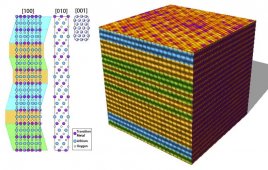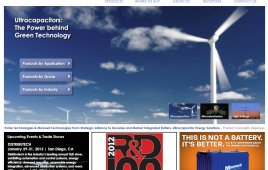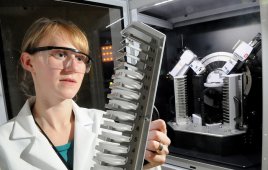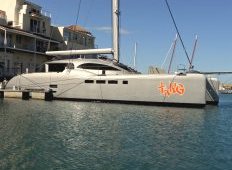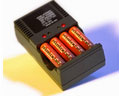American Vanadium Corp. has entered into a Letter of Intent (LOI) to acquire DMG MORI’s wholly owned subsidiary, GILDEMEISTER energy storage (GES), manufacturer of the CellCube vanadium flow energy storage system. The LOI provides American Vanadium with the exclusive right to enter into a share purchase agreement (SPA) on or before February 29, 2016. “With…
ViZn Energy systems builds a better best-in-class grid-scale flow battery
The Vanguard II battery stack further expands the operating range of ViZn’s systems, strengthening their industry-leading long-duration energy services by enhancing the fast switching and high power cycling capabilities.
Battery energy storage reaches highest levels in 2015
This article, from law firm Bricker & Eckler, is authored by Dylan Borchers. According to a recent report released by GTM Research and the Energy Storage Association, 2015 is shaping up to be the biggest year yet in the energy storage sector, with a projected deployment of 220 MW. This amount is expected to more than double…
Report analyzes life-cycle costs of energy storage technologies
This report ($2,225 through November 30) summary comes from the authors at Energy Storage Update When considered in the context of major technology development and commercialization in the electric power industry, grid-scale storage has arrived at a critical juncture. In contrast to the previous reliance on pumped hydro-storage, many technologies have reached commercialization with lithium-ion…
Saft delivers innovative cold weather energy storage system in Arctic Alaska
Saft, a designer and manufacturer of high-tech industrial batteries, has delivered its Intensium Max+ 20M containerized Battery Energy Storage System (BESS) with innovative “Cold Temperature Package” on schedule during Q3 2015, to Kotzebue Electric Association Inc. (KEA), an electric cooperative based in Kotzebue, Alaska. The system will let the existing hybrid wind-diesel power system achieve…
Using hydrogen to enhance lithium ion batteries
Lawrence Livermore National Laboratory scientists have found that lithium-ion batteries operate longer and faster when their electrodes are treated with hydrogen. Lithium-ion batteries (LIBs) are a class of rechargeable battery types in which lithium ions move from the negative electrode to the positive electrode during discharge and back when charging. The growing demand for energy storage…
NREL innovation gives electric vehicle batteries a safety upgrade
Nika Durham and Anya Breitenbach / NREL Every day, lithium-ion (Li-ion) batteries are used safely in millions of cell phones, laptops, and electric-drive vehicles (EVs). At the same time, Li-ion batteries have a tendency to overheat in very rare occasions, which has led to electronics product recalls and the grounding of Boeing’s 787 Dreamliner airplane…
One battery mystery solved: Atomic-resolution microscopy answers longstanding questions about lithium-rich cathode material
Editor’s note: This article should be of interest to the wind and power-storage industries because Berkeley Lab scientists have unraveled structural ambiguities in lithium-rich transition metal oxides. Better batteries benefit the entire utility industry. Using complementary microscopy and spectroscopy techniques, researchers at Lawrence Berkeley National Laboratory (Berkeley Lab) say they have solved the structure of…
Battery and ultra cap manufacturers to offer combined products
Editor’s note: This cooperation is significant. Batteries and capacitors each store electric power in different ways and with different advantages and drawbacks. Properly connecting the two would allow taking advantage of the plusses of each and thereby overcoming their drawbacks. Resulting products could be useful in cars and storing power off grid. Battery manufacturer Exide…
Project selected to explore limits of battery operations
Det Norske Veritas (DNV) says its proposed project for exploring the outer limits of battery operations has been selected by the US Department of Energy and will receive funding from the Advanced Research Projects Agency Energy (ARPA-E). In cooperation with partners NexTech Materials and Beckett Energy Systems, the DNV led project will use battery-life-prediction modeling…
Redox shuttle provides highest overcharge protection for certain cathodes
Scientists at the U.S. Department of Energy’s (DOE) Argonne National Laboratory have patented an extremely stable, 4-Volt redox shuttle molecule that provides overcharge protection for lithium-ion batteries containing lithium–iron-phosphate based cathodes across hundreds of charging cycles. Overcharge is a major safety concern for Li-ion batteries because it could cause thermal runaway, a concern for…
Big dry-cell battery ready for use with wind farms and solar projects
Renewable energy projects often cannot consistently deliver electricity so some of the power must be stored, often in larger batteries. For example, the Notrees wind project will be the largest that uses a battery backup, and more such projects are in the pipeline. “We have a few large projects awaiting to be announced later this…
Custom batteries for wind turbines
A global research and battery manufacturer has introduced a special series of batteries for wind turbines. The LC-WTV and LC-WTP series of batteries are the latest iteration of Panasonic’s Valve-Regulated Lead Acid (VRLA) technology adapted to the specific and demanding needs of wind turbine applications.“These customized batteries provide superior performance in the tough environment of…
Think ultracapacitors to improve or replace batteries
Although there is a growing market for environmentally sensitive energy production, key challenges to widespread adoption remain. Among the most significant is creating consistent, reliable stores of energy from unpredictable natural resources such as solar and wind power. In the wind turbine market in particular, variable weather conditions create a demand for an energy storage…
Hybrid power train drives this cool cat when wind cannot
A hybrid power train in the world’s largest plug-in, hybrid-electric sailboat – a 60-ft Tag Yachts catamaran, will let it run on wind-generated electricity stored in lithium-ion batteries. Christened Tang at her September 21 launching, the carbon-fiber cat is undergoing tests at Tag facilities in St. Francis Bay, South Africa. She’ll set sail later this…
Solving the use-it-or-lose-it wind energy problem
Examine a utility’s load curve over the course of a week and the trace looks like a roller-coaster. Demand for electric power peaks about 5 pm each day and declines to a low at about 2 am. Look closer and you see demand changing almost by the second. So there are two problems here that…
Planning a Better Battery for Wind
The people at IBM’s Almaden Institute say its goal is to catalyze long-term, concerted efforts to create rechargeable next-generation batteries with ten times higher energy density, than the best current Lithium-ion batteries. IBM thinkers recognize that renewable energy sources, such as wind and solar power, fluctuate continuously, yet society requires a steady, dependable electricity supply.…

